How To Measure for Vertical Blinds
Standard Windows
-
Vertical Blinds
Inside the Recess - Recess fit blinds
A recess fit blind means you supply us with the width and drop of your recess – from top to bottom and wall to wall. We make deductions to account for the brackets to ensure your blind fits within the recess perfectly.
To measure a vertical blind to fit inside the recess of your standard window, simply measure the full width and the height of the recess. Then input those measurements into the product page with your order selecting the ‘recess’ option. We’ll do the rest, leaving you the well-deserved excuse to put your feet up, you worked hard for it after all! We will deduct 6mm from the width and 12mm off the drop measurement.
Don’t be tempted to deduct any measurements, we do this for you. Make sure you use a metal tape measure; a cloth one can stretch and give you more millimetres per centimetre than a pound-shop ruler. Also, take your measurements in three places and give us the smallest (if there is a smallest). You will find that some recesses shift and settle over time.
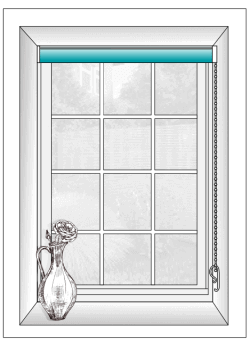
Outside the Recess - Exact fit blinds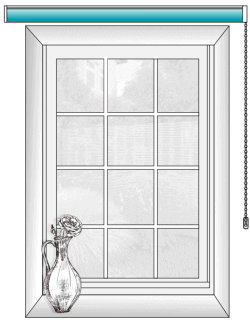
An exact fit blind means we won’t make any deductions to the width or drop measurements. Exact fit is the bracket to bracket measurement and is commonly found installed outside of a recess. The size you give us is the size your blind is made to.
If you want your blind to hang outside the recess, measure the height and width but be sure to add some overlap to reduce light leakage. This overlap should be about 70mm at the top and bottom and 50mm each side, ensuring there are no dazzling strips of sunlight once your blind is happily installed. Please select the ‘exact’ size option when ordering.
A standard window is the easiest to measure for a vertical blind as it has no angles or changes to the shape inside or outside of the recess.
Angled Bay
-
Vertical Blinds
Has it been keeping you up at night? Knowing you need to measure your bay window for a vertical blind, but not knowing how to do it. All those angles, all that potential to get it so very wrong. What are you going to do? Read the simple instructions and tackle the project head on – it’s easier than you think! If any of this talk of measuring and fitting blinds still sounds like gobbledegook to you, please take a look at our Measuring & Fitting Service. Our professional tradespeople may be about to help!
Steps:
- Step 1: First, you need to measure the blind’s protrusion. This is to find out how far the blind needs to be away from the window. A vertical blind’s headrail protrudes by approximately 75mm. Take a look at the window and check for any window handles or vents or anything else sticking out that would catch on the blind. Measure how far these protrude and add it to the headrail depth. This figure is called P (see, that GCSE in algebra did come in handy!).
- Step 2: Using a ruler, place two pieces of card edge-to-edge and measure the blind’s protrusion (P). Draw a line on both to indicate this.
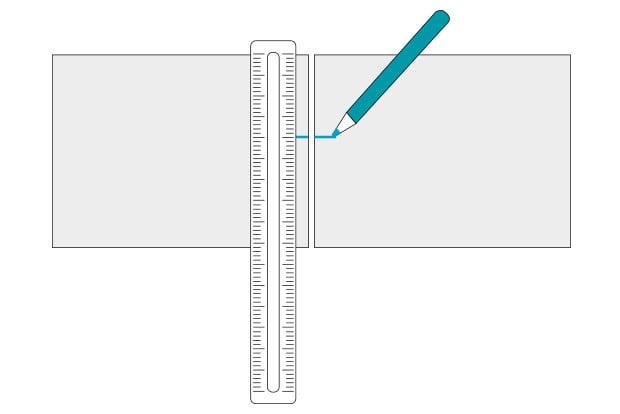
- Step 3: Here’s the clever part: slide the paper towards each other on the windowsill, heading into a corner. Keep the edges flat against the sill. When the two protrusion marks meet, stop.
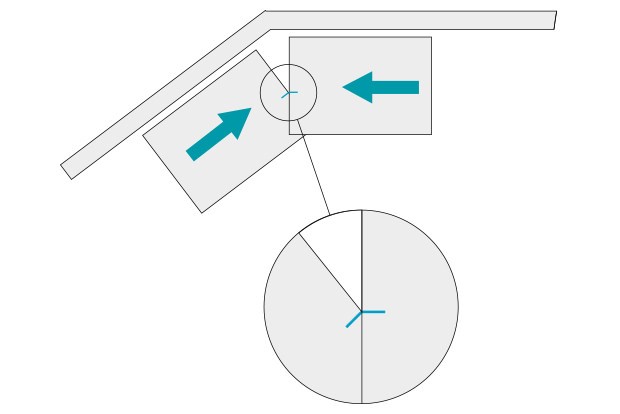
- Step 4: Grab your pencil again and mark on the windowsill the point where the lines meet. Do this for any other angled parts of the bay window.
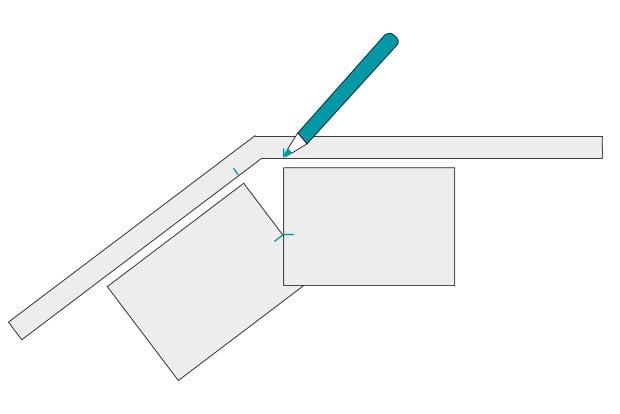
- Step 5: Measure across from one mark to the next, going from closest line to the next closest line, this will show you the width of the blind that you will need to order from us.
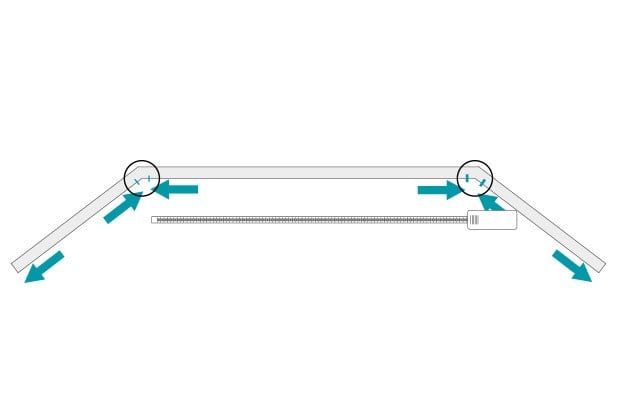
- Step 6: Measure from the drop (listed on our website’s product specifications) to where you want the blind to end, which will most likely be your windowsill.
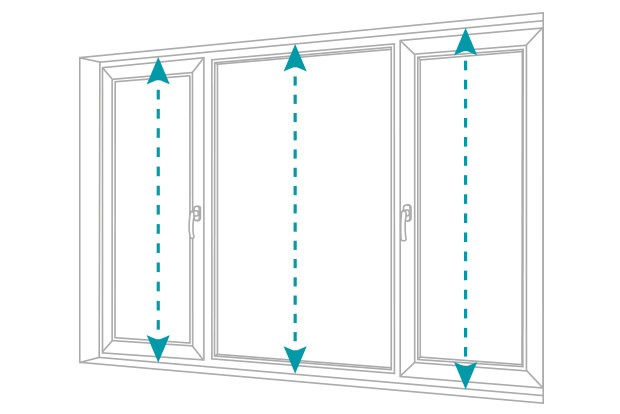
- Step 7: Now, armed with these measurements, you’re ready to order your blind! Enter them into the product page and proceed to the checkout! Finally, go make yourself a celebratory cup of tea, you’ve just found the size of the blind you need for your angled bay window.
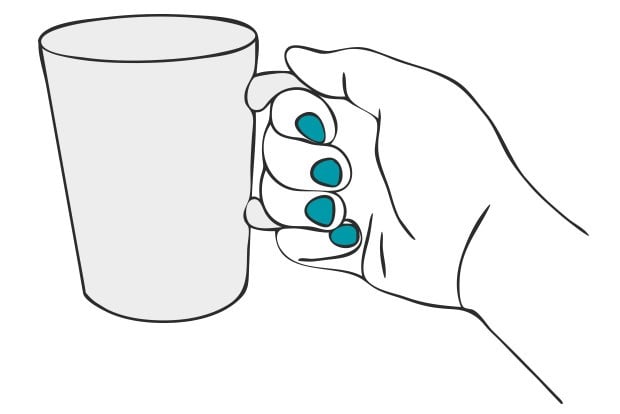
An angled bay window is a bay window that has the windows joining at an angle, which need to be accounted for when measuring for blinds.
Box Bay
-
Vertical Blinds
The box bay needn’t be the blind fitter’s three-sided nemesis. Here’s a quick and easy way to work out what size blinds you need for your box bay window. If any of this talk of measuring and fitting blinds still sounds like gobbledegook to you, please take a look at our Measuring & Fitting Service. Our professional tradespeople may be about to help!
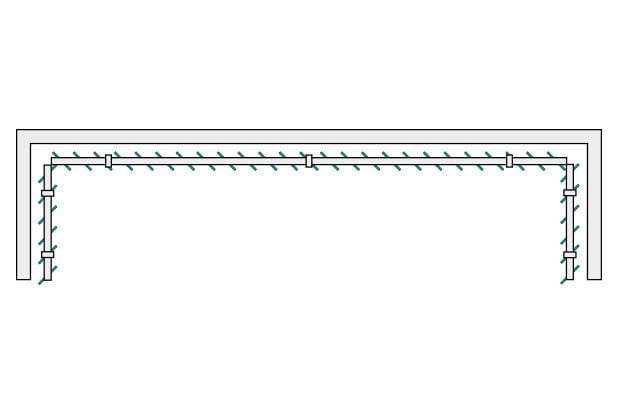
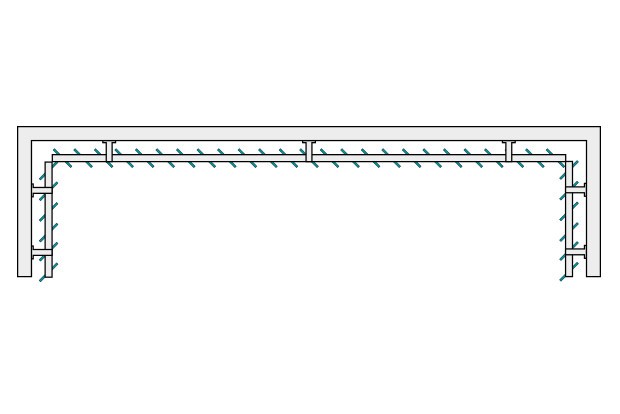
Steps:
- Step 1: Cautiously approach your bay window, take a deep breath and proceed. This isn’t as difficult as it looks! Figure out where you are going to fit the fixing brackets, either top x or face x. Measure the widths of each window, go from corner to corner.
- Step 2: Now you need to reduce the measurements by the bracket size. Our blinds have either a 75mm face fix bracket or 25mm top fix bracket, which you will need to specify when placing your order. With the following calculations, both fittings will have a 25mm clearance between fabric and the facing surface.
- Step 3: Time to get mathematical! Once you’ve chosen your bracket, you need to reduce the measurement of the front window blind by the bracket size x2. Here’s the formula: Corner to corner window length – 150mm = the blind length you need to order. Order this blind as 'recess' fit.
- Step 4: You’ll also need to reduce the measurement of the side windows blind by the bracket size. Here’s the formula: Corner to corner side window length – 75mm + 6mm = the blind length you need to order. Order these blinds as 'recess fit'. The 6mm addition will negate the deductions we would make to the width of the recess fit blind.
- Step 5: Order your blinds using your newly acquired measurements and then... relax!
A box bay window is a three-sided bay window that sees the blinds join at right angles to each other.